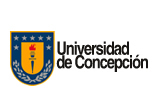Preprint 2024-07
Raimund Bürger, Enrique D. Fernández Nieto, Jorge Moya:
A multilayer shallow water model for tsunamis and coastal forest interaction
Abstract:
Models and numerical methods of the impact of tsunamis on coastal forests are of vital importance for exploring the potential of coastal vegetation as a means of mitigation. Such a model is formulated as a multilayer shallow water system based on a free-surface formulation of the Euler equations for an ideal fluid. Specifically, the Euler equations are approximated by a layer averaged non-hydrostatic (LDNH) approach involving linear pressures and piecewise constant velocities. Furthermore, based on [K. Iimura and N. Tanaka, Numerical simulation estimating effects of tree density distribution in coastal forest on tsunami mitigation, Ocean Engrg. 54 (2012) 223–232] drag forces, inertia forces, and porosity are added to model the interaction with the forest. These ingredients are specified in a layer-wise manner. Thus, the vertical features of the forest are described with higher accuracy than within a single-layer approach. Projection methods for the non-hydrostatic pressure in conjunction with polynomial viscosity matrix finite volume methods [M. J. Castro and E. Fernández-Nieto, A class of computationally fast first order finite volume solvers: PVM methods. SIAM J. Sci. Comput. 34 (2012) A2173–A2196] are employed for the numerical solution of the multilayer model, that is for the propagation of tsunamis and coastal flooding. Experimental observations and field data are used to validate the model. In general good agreement is obtained. Results indicate, moreover, that coastal vegetation can operate as an efficient natural barrier against coastal hazards and can significantly reduce the effects of tsunamis.
This preprint gave rise to the following definitive publication(s):
Raimund BüRGER, Enrique D. FERNáNDEZ NIETO, Jorge MOYA: A multilayer shallow water model for tsunamis and coastal forest interaction. ESAIM: Mathematical Modelling and Numerical Analysis, vol. 59, 2, pp. 1113-1144, (2025).


